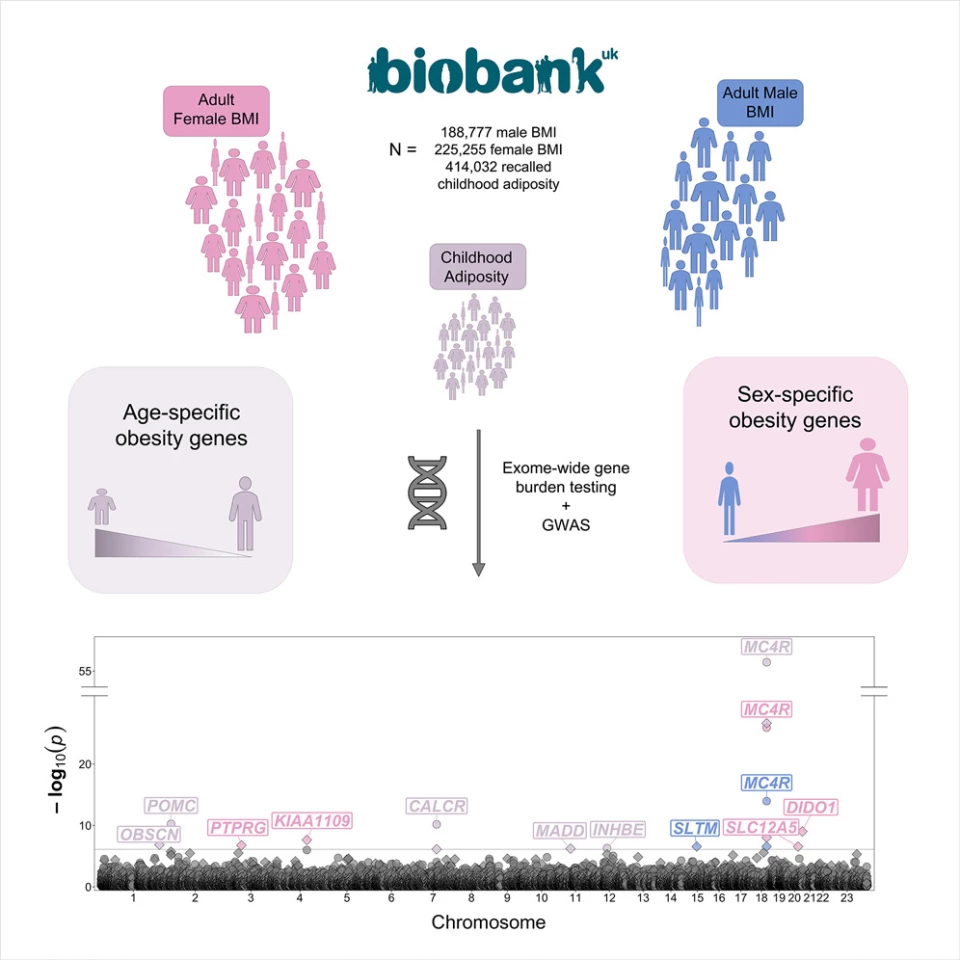Obesity is a massive global crisis, with around 650 million adults and 124 million children and adolescents impacted. It’s also estimated that up to 70% of body size is directly linked to genetic factors.
In addition to this, adult men and women have vastly different physiology in obesity, with different ways of storing fat and the locations where it accumulates, which then can also present sex-specific health complications and difficulties in weight loss.
In a study analyzing the data sourced from 414,032 adults in the UK Biobank, researchers from Cambridge University have made new discoveries about sex- and age-specific genetic hiccups related to obesity.
Five genes were associated with obesity in females (DIDO1, KIAA1109, MC4R, PTPRG, and SLC12A5) and two in males (MC4R and SLTM). And while the findings relate to the increasingly criticized body mass index (BMI), it nonetheless provides a base for new correlations between genes and size.
MC4R has previously been implicated in male and female obesity, DIDO1, MADD and SLTM have also been tied to cell death and DNA damage.
However, the scientists uncovered entirely new findings related to DIDO1, PTPRG and SLC12A5. More than 80% of women with DIDO1 and SLC12A5 variants were obese, and those with the DIDO1 mutant also had higher testosterone levels and a greater waist-to-hip ratio, both risk indicators for obesity-related diabetes and heart disease. Those with the SLC12A5 variant also had a greater rate of type 2 diabetes compared to women without it.

“What’s quite surprising is that if you look at the function of some of these genes that we identified, several are clearly involved in DNA damage response and cell death,” said John Perry, professor at the university’s MRC Epidemiology Unit. “There’s currently no well-understood biological paradigm for how DNA damage response would influence body size. These findings have given us a signpost to suggest variation in this important biological process may play a role in the etiology of obesity.'
Two other genes, OBSCN and MADD, are new links to age-related body size, with OBSCN-variant carriers more likely to have childhood obesity and MADD-variant carriers having a higher rate of low BMI. Interestingly, MADD had no impact on adult obesity, making it an interesting age-specific discovery.
Genes are shaping up to be a key factor in who is more predisposed to obesity, with many studies highlighting telltale mutations.
A 2017 study found a faulty gene that caused mice to gain weight, then in 2018, scientists demonstrated how manipulating genetic expression can result in weight loss without any lifestyle changes.
Other studies from that year also showed how the interplay between genetic mutations and severe obesity and increased weight gain were linked.
While an emerging science, with most discoveries having only been made in the last five years, sex- and age-specific genetic targets will be vital in the creation of effective weight-loss therapies.
“There are a million and one reasons why we should be thinking about sex, age, and other specific mechanisms rather than just lumping everyone together and assuming that disease mechanism works the same way for everyone,” Perry said.
The team now plans to repeat this study with a more diverse population.
“We hope the study can reveal new biological pathways that may one day pave the way to new drug discovery for obesity,” Perry added.
The research was published in the journal Cell Genomics.
Source: University of Cambridge






